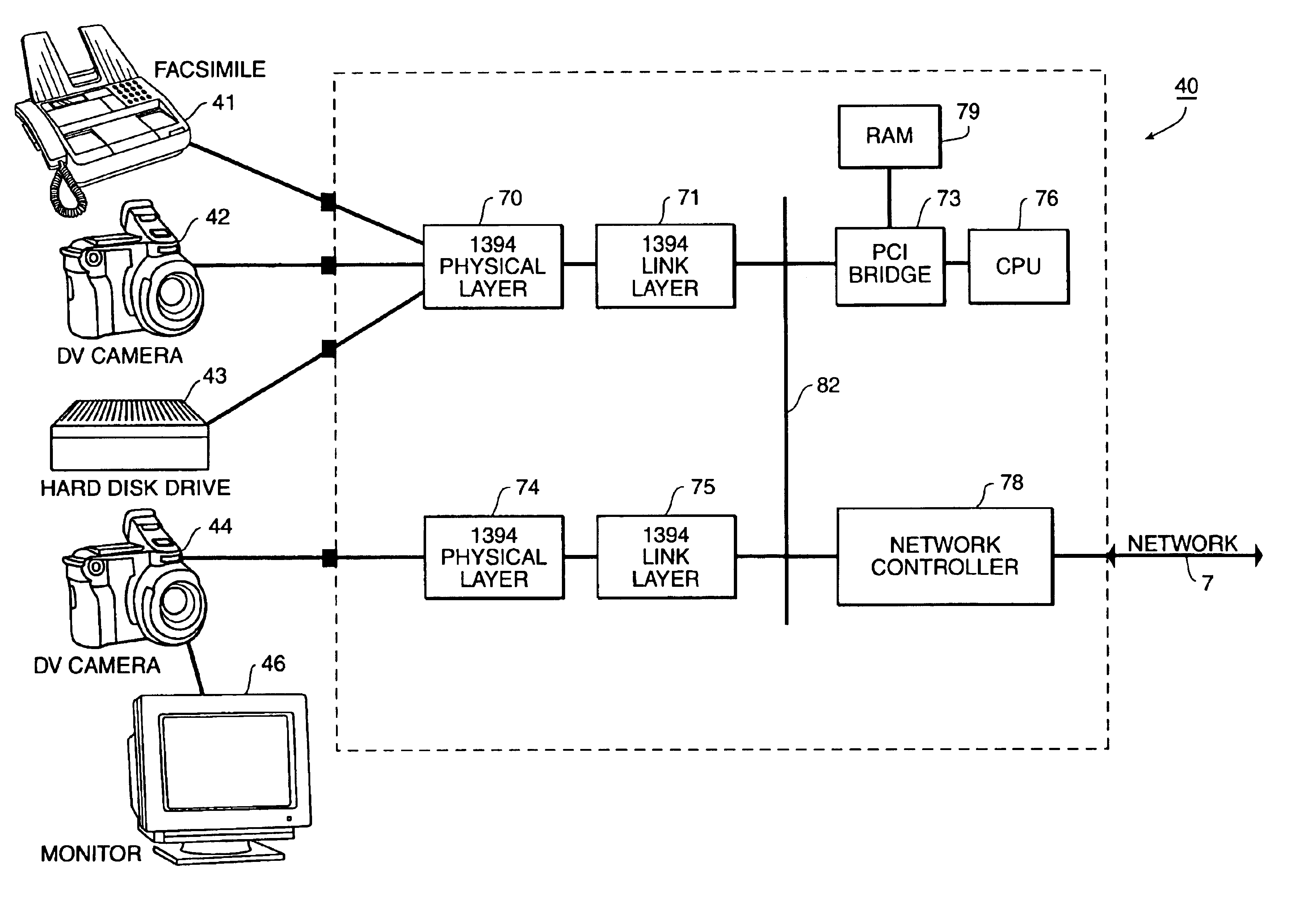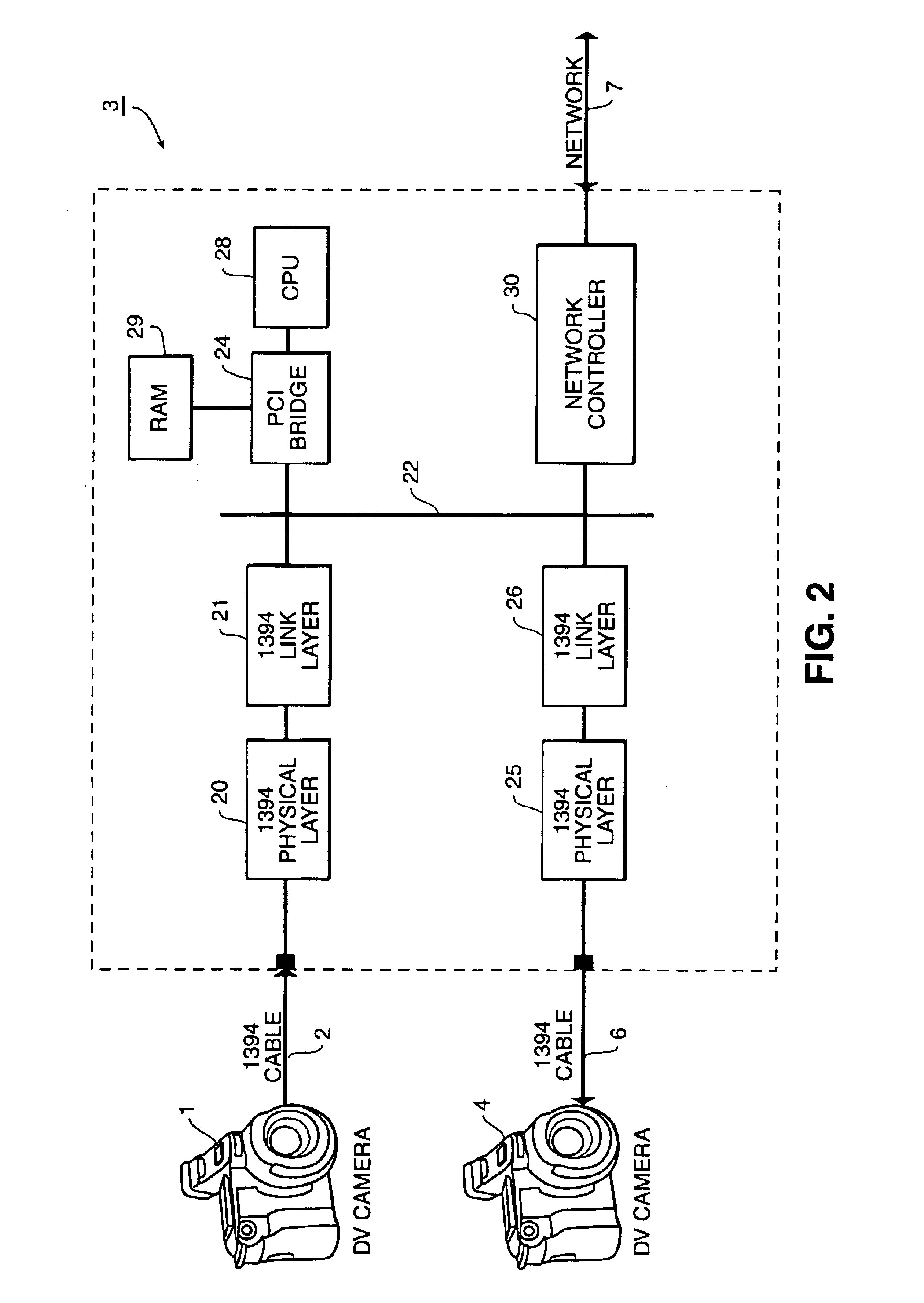Channel protocol for IEEE 1394 data transmission
- Summary
- Abstract
- Description
- Claims
- Application Information
AI Technical Summary
Problems solved by technology
Method used
Image
Examples
first embodiment
[0060]In the present embodiment shown in FIG. 5, only DV cameras 42, 44, 51 and 55 are transmitting over the same broadcast channel. Therefore, each of the DV cameras is provided with its own 1394 bus, physical layer and link layer, such that two channel 63 DV cameras do not coexist on the same physical IEEE 1394 bus. In the first embodiment explained with respect to FIG. 1, each link layer 21 and 26 had only one device that was transmitting or receiving data packets on channel 63. Consequently, CPU 28 in FIG. 2 only had to determine which link layer, 21 or 26, was the appropriate recipient or transmitter of a data packet. In the FIG. 5 embodiment, on the other hand, CPU 28 must determine, based on header and subheader information, which link layer and which channel of that link layer should receive the data packet.
[0061]In the embodiment shown in FIG. 5, facsimile 41, DV camera 42, and hard disk drive 43, are all interfaced with one physical layer and one link layer within 1394 net...
second embodiment
[0062]In order to distinguish which of the multiple devices connected to one link layer should receive a data packet, the data packet received by CPU 76 in network interface 40 must include sufficient information to allow the CPU to derive both the link layer and the channel number. For example, the header might also include a subheader. As shown in FIG. 6, each data packet contains a header which indicates which link layer receives the data and a subheader which indicates a channel within the link layer which should receive the data packet. Thus, the data packet which is received by CPU 76 includes not only a header but also a subheader attached to the data field.
[0063]A more detailed description as to how a data packet is received from the local area network and output to a 1394 interface device will now be discussed in greater detail with respect to FIG. 7. Upon receiving a data packet from network 7, the data packets are stored within network interface 78's internal buffer. Aft...
PUM
 Login to View More
Login to View More Abstract
Description
Claims
Application Information
 Login to View More
Login to View More - R&D
- Intellectual Property
- Life Sciences
- Materials
- Tech Scout
- Unparalleled Data Quality
- Higher Quality Content
- 60% Fewer Hallucinations
Browse by: Latest US Patents, China's latest patents, Technical Efficacy Thesaurus, Application Domain, Technology Topic, Popular Technical Reports.
© 2025 PatSnap. All rights reserved.Legal|Privacy policy|Modern Slavery Act Transparency Statement|Sitemap|About US| Contact US: help@patsnap.com



